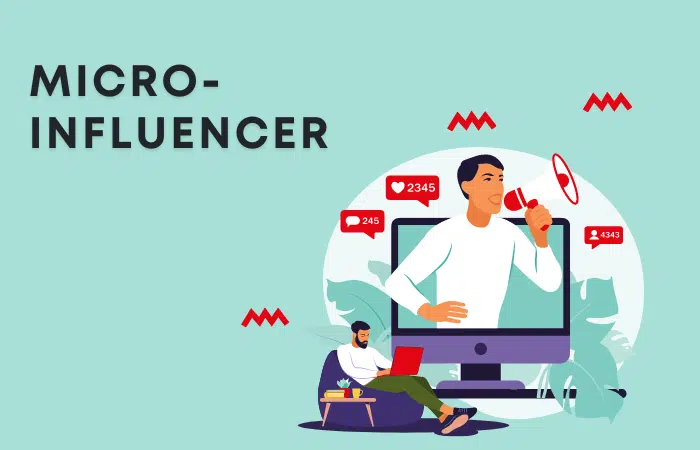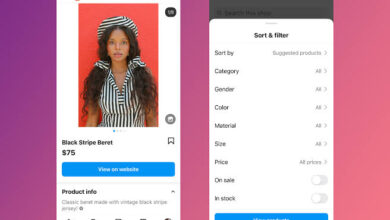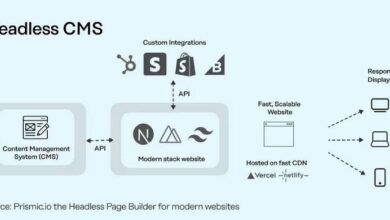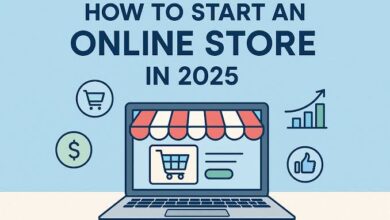5 Micro Influencer Strategies for Fashion Startups

If you’re running a fashion startup, you’ve probably heard about micro influencers and how they can help grow your brand.
But what exactly are micro influencers, and why are they so important for new fashion businesses?
In this article, we’ll explain everything in simple, easy-to-understand language. We’ll also share five smart micro influencer strategies that can help your fashion startup get noticed, build trust, and sell more clothes.
What Are Micro Influencers?
Micro influencers are social media creators who have between 10,000 and 100,000 followers. They aren’t celebrities or huge internet stars, but they have something just as valuable: a loyal and engaged group of followers who trust them.
These influencers post about things they love, like fashion, beauty, or lifestyle, and their followers listen because it feels personal and real.

Unlike big celebrities who might promote anything for money, micro influencers usually focus on specific interests or communities.
For example, some might specialize in sustainable fashion, others in plus-size style, or streetwear. Because their followers feel like they know the influencer personally, their recommendations feel honest and trustworthy.
Read Next: Best AI Tools for Small Business Marketing in 2025
Why Are Micro Influencers Great for Fashion Startups?
For fashion startups, working with micro influencers is a smart move for several reasons:
1. Affordable: Hiring a celebrity influencer can cost thousands or even millions of dollars. Micro influencers usually charge much less, making them perfect for startups with smaller budgets.
2. Authentic: Micro influencers create content that feels real and relatable. Their followers trust their opinions, which helps your brand build credibility.
3. Targeted: Because micro influencers focus on specific niches, you can reach the exact audience that fits your brand, whether that’s eco-conscious shoppers or streetwear fans.
4. High Engagement: Micro influencers often have higher engagement rates than bigger influencers. This means their followers like, comment, and share their posts more, which helps spread your message.
Now that you know what micro influencers are and why they’re valuable, let’s dive into five effective strategies your fashion startup can use to work with them.
5 Micro Influencer Strategies for Fashion Startups
Before we get into the 5 micro influencer strategies for fashion startups, you should know that these strategies are not just about quick sales, they’re about building real relationships with influencers and their audiences. When done right, these partnerships can help your brand grow steadily and create loyal customers.
Now, let’s take a look at the 5 micro influencer strategies for fashion startups:
1. Platform-First Strategy
This strategy means focusing on the social media platform where your ideal customers spend most of their time. For fashion brands, Instagram and TikTok are usually the best places to start.
How it works: Find several micro influencers on one platform and launch a campaign together. For example, if you’re launching a new clothing line, you could partner with 30 TikTok creators to post videos about your clothes during a big event like Fashion Week.
Why it works: When many influencers post about your brand at the same time on the same platform, it creates a buzz. This can help your brand go viral and reach lots of new customers quickly.
Example: A startup launched a new streetwear collection by working with 25 TikTok creators who made fun styling videos all at once. The campaign got a lot of attention and helped the brand grow fast.
2. Niche-First Strategy
This strategy focuses on finding micro influencers who speak directly to a specific group of people that matches your brand’s style or values.
How it works: Look for influencers who already talk about things related to your brand. For example, if your startup makes eco-friendly clothes, find influencers who focus on sustainable living or vegan fashion.
Why it works: When influencers share your brand with people who already care about what you offer, those followers are more likely to trust you and buy your products.
Example: A vegan fashion brand partnered with micro influencers who promote plant-based lifestyles. Their followers loved the authentic connection, and the brand built a loyal customer base.
Read Next: 5 Ways to Earn from Instagram as a Small Creator
3. Content Collaboration Strategy
This strategy is about working with influencers to create fun and interesting content together, instead of just sending them your products to post about.
How it works: Let influencers style your clothes in their own way and share videos or photos that tell a story. For example, they can make Instagram reels showing different ways to wear one dress or TikTok videos about getting ready for a night out using your accessories.
Why it works: People trust influencers’ opinions and enjoy seeing how real people use products. This helps your brand feel more relatable and inspires followers to try your clothes.
Example: A jewelry startup sent pieces to influencers and asked them to create videos showing five ways to style each necklace. The content was fun and helpful, which led to more sales.
4. Affiliate and Discount Code Strategy
This strategy gives influencers special discount codes or links they can share with their followers. The influencers earn money for every sale made through their code.
How it works: Give each influencer a unique code or link. When their followers use it to buy your products, the influencer gets a commission.
Why it works: This motivates influencers to promote your brand more because they earn money from their efforts. It also helps you track which influencers bring in the most sales.
Example: A fashion startup offered influencers a 20% commission on every sale made with their discount code. This encouraged influencers to share the code often, driving more sales for the brand.
5. Ambassador Program Strategy
This strategy is about building long-term relationships with a group of micro influencers who become your brand ambassadors.
How it works: Invite a group of influencers to represent your brand for several months. Give them early access to new collections, special perks, and exclusive updates. In return, they regularly share content about your brand.
Why it works: Long-term partnerships create ongoing buzz and social proof. Ambassadors become trusted voices for your brand, helping you build a loyal community over time.
Example: A startup invited 50 micro influencers to join a year-long ambassador program. These influencers shared regular posts and stories, which helped the brand stay visible and trusted.
Read Next: The Ultimate SEO Checklist After Google Updates 2025
How to Build Your Micro-Influencer Marketing Strategies for Your Fashion Startup
To get started with micro influencer marketing, follow these simple steps:
1. Set clear goals: Decide what you want to achieve, brand awareness, more sales, or building a community.
2. Find the right influencers: Look for creators who fit your brand’s style and values. Check their engagement to make sure their followers are active and real.
3. Reach out personally: Send friendly, personalized messages explaining why you want to work with them and how it benefits both of you.
4. Create clear but flexible briefs: Tell influencers what you want but allow them creative freedom to keep content authentic.
5. Track your results: Use discount codes, affiliate links, or social media analytics to see what’s working and what isn’t.
6. Build relationships: Don’t just work with influencers once. Keep in touch and nurture long-term partnerships.
Conclusion
Micro influencer strategies for fashion startups are more than just quick ways to sell clothes. They’re about building real, honest relationships with people who love your brand and want to share it with their followers.
For fashion startups, this is a powerful way to grow your brand, build trust, and reach the right customers without spending a fortune.
Try different strategies, measure what works best, and always focus on being authentic. When your influencers truly believe in your brand, their followers will too. That’s the secret to long-term success in the fashion world.
Read Next: Why Startups Should Use Headless CMS in 2025
Frequently Asked Questions
1. How much does it cost to work with micro influencers?
It usually costs between $100 and $500 per post, depending on the influencer and platform. This makes it affordable for most fashion startups.
2. How do I know if an influencer is right for my brand?
Look for influencers who share content similar to your style and values. Check their engagement rate and read comments to see if their followers are active and genuine.
3. Can I work with micro influencers on different platforms?
Yes! Instagram and TikTok are the most popular for fashion, but YouTube and Pinterest can also work depending on your audience.
4. How do I measure if my micro influencer campaign is successful?
Track things like likes, comments, shares, website visits, and sales using discount codes or affiliate links. These numbers show how well your campaign is working.




